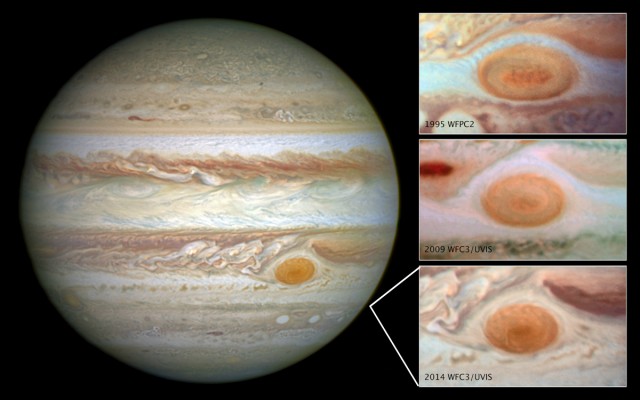Great Red Spot not doing so great
Ars Technica » Scientific Method 2014-05-15
Today, NASA released images taken with the Hubble's Wide Field Camera that show Jupiter's Great Red Spot has reached the smallest size yet recorded. At 16,500km in diameter (10252.6 miles), the spot isn't likely to go away any time soon, but the shrinkage represents the continuation—and possibly acceleration—of a long-term trend.
Observations made from Earth in the 1800s suggest that the Red Spot was once over 40,000km across. By the time the Voyagers visited and provided an accurate measure, the Spot was down to 23,000km. Hubble's been taking images regularly, but NASA credits amateur astronomers for noticing that the rate of the storm's dissipation picked up in 2012, with the feature losing 900km of diameter (559 miles) a year since then.
The storm is fed energy and material from Jupiter's fast-moving cloud belts, and the researchers who are studying the new image suggest that some of this supply is being choked off. NASA's Andy Simon pointed to the series of complex eddies, visible above, that may be controlling the flow of energy into the Great Red Spot. Further imaging is planned to study the behavior of these eddies in the hope that it will tell us what's behind the vanishing spot.
Read on Ars Technica | Comments
